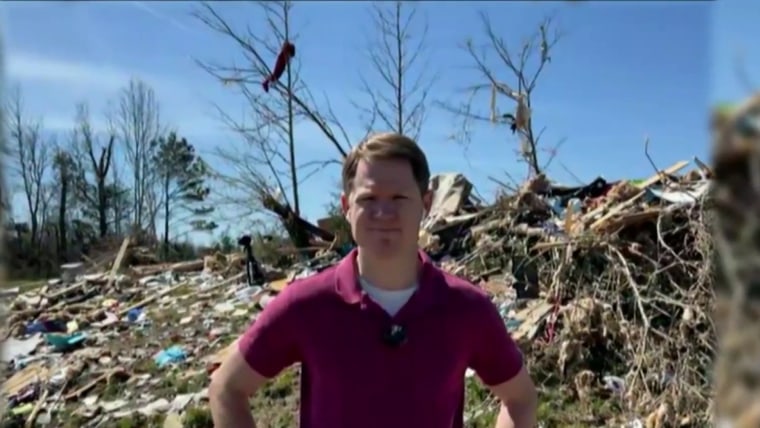The tornado that hit Rolling Fork was also an intense, fast-moving storm that struck under the cover of night, when visibility is low and people are more likely to be asleep and caught off guard.
“You had all these different factors coming together to create the perfect storm, and unfortunately we saw the results of that,” Strader said.
Matt Laubhan, a Mississippi meteorologist at NBC affiliate WTVA, said Mississippi sees a lot of tornadoes, including a devastating EF-5 almost 12 years ago. He noted that some areas hit by those storms received funding for emergency shelters, but that none such structures exist in Rolling Fork.
“When you talk about Rolling Fork, that’s a much more economically depressed area,” Laubhan told NBC News’ Andrea Mitchell. “And that’s a place that did not have those kind of community shelters.”
Robert Bradford, emergency management agency director for Adams County, Mississippi, who is helping coordinate response efforts, said Rolling Fork does not have a community safe room.
As the storm evolved on Friday, William Gallus, a professor of meteorology at Iowa State University, said his worst fears were realized. In addition to forming at night, the tornado had a rare, long track, slicing 59 miles through Mississippi. Less than 1% of tornadoes stay on the ground for longer than 50 miles.
“If there’s a tornado outbreak at night and it’s in the Southeast, you know there’s going to be people severely injured or killed and the best thing you can do is hope that the tornadoes thread the needle and miss actual small towns,” he said.
Across the Southeast, mobile homes are especially vulnerable to tornadoes, which are classified according to what’s known as the Enhanced Fujita (EF) scale. The weakest tornadoes, or EF-0 and EF-1, have winds of up to 110 mph and typically cause relatively light damage. The most powerful tornadoes, or EF-5, have winds above 200 mph and usually cause catastrophic damage.
Preliminary surveys suggest the tornado that hit Rolling Fork had 170 mph winds, and the storm has been rated an EF-4 by the National Weather Service in Jackson, Mississippi.










